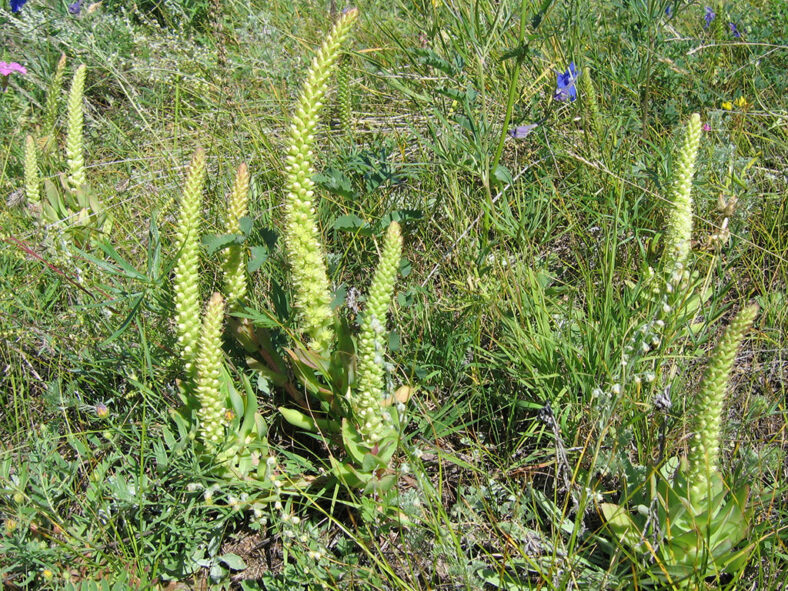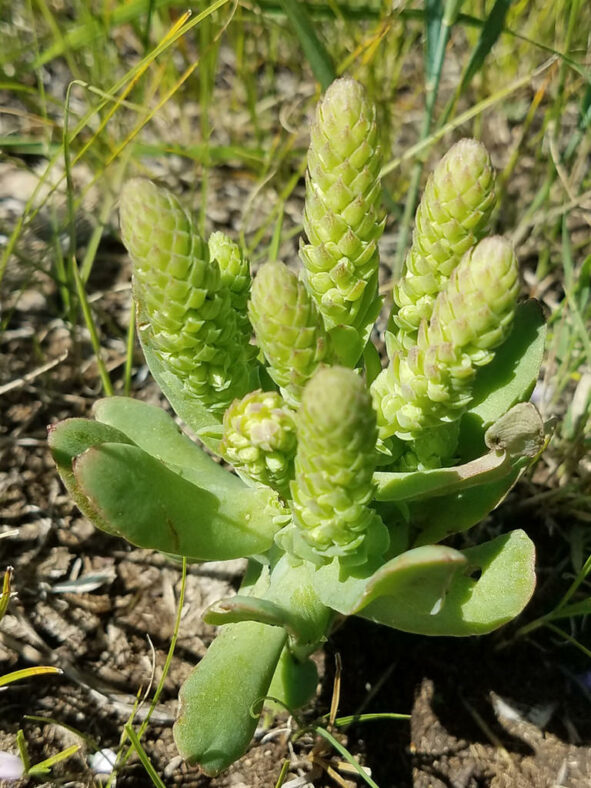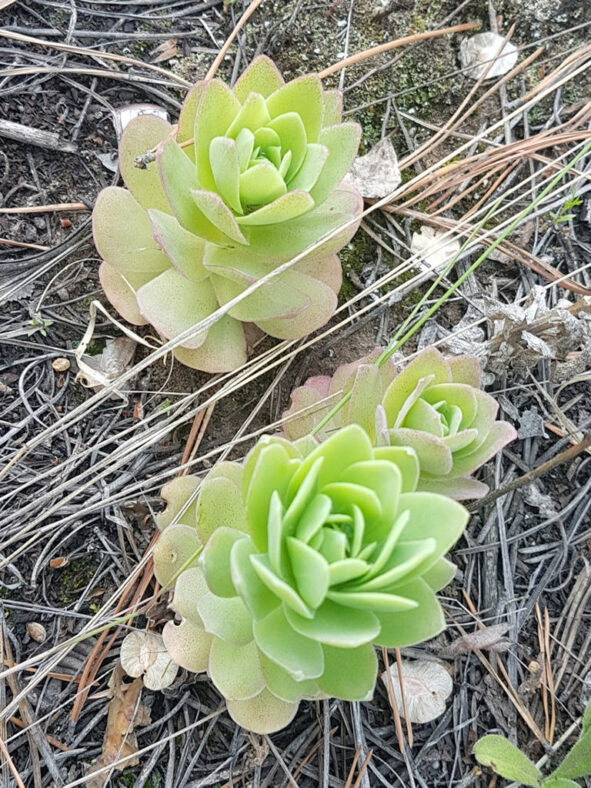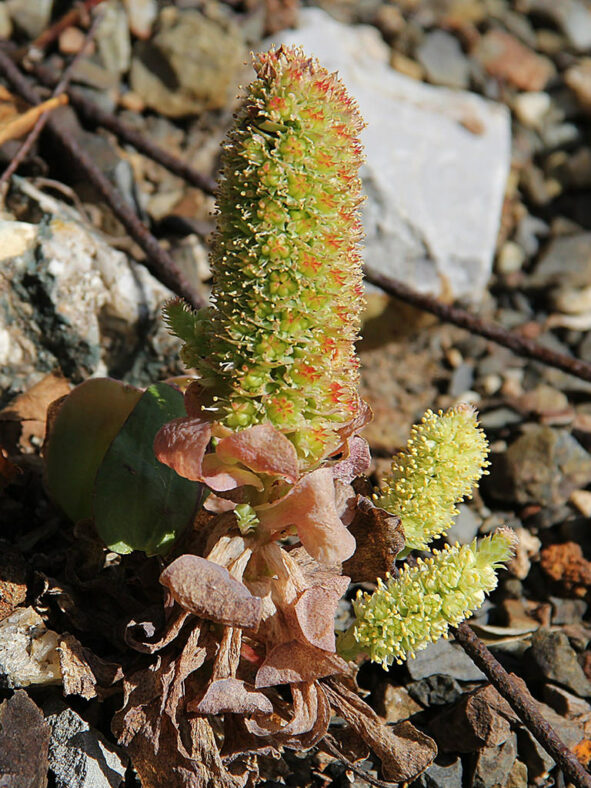Scientific Name
Orostachys malacophylla (Pall.) Fisch.
Common Name(s)
Green Duncecap
Synonym(s)
Cotyledon malacophylla, Hylotelephium malacophyllum, Sedum malacophyllum, Sempervivum malacophyllum, Umbilicus malacophyllus
Scientific Classification
Family: Crassulaceae
Subfamily: Sedoideae
Tribe: Sedeae
Subtribe: Umbilicinae
Genus: Orostachys
Etymology
The specific epithet "malacophylla" (pronounced "mah-lah-koh-FILL-a") means "soft-leaved, having soft leaves" and refers to the leaves of this species, which are soft to the touch.
Origin
Orostachys malacophylla is native to Russia (eastern Siberia), Mongolia, northern and north-eastern China, Korea, and Japan. It grows on rock crevices at elevations ranging from 3,940 to 5,910 feet (1,200 to 1,800 m).
Description
Orostachys malacophylla is a small succulent that forms rosettes of thick, fleshy, green to pale green leaves. The rosettes can reach a diameter of 6 inches (15 cm) and slowly produce offsets. The leaves are oblong, obovate, or elliptic, with a rounded tip and absent apical spine. They can measure up to 2.8 inches (7 cm) long and 1.2 inches (3 cm) wide.
In summer, the rosettes rise like an erupting volcano, bursting into a dense, racemose, or sometimes spike-like and branched inflorescence that can grow up to 8 inches (20 cm) tall. The flowers have white petals, stamens conspicuously longer than the petals, and deep purplish-red anthers.
Orostachys malacophylla goes dormant in winter, losing all its aboveground foliage when grown outside, but returns in full force in spring.

Varieties of Orostachys malacophylla
- Orostachys malacophylla var. aggregata
- Orostachys malacophylla var. iwarenge
- Orostachys malacophylla var. malacophylla
How to Grow and Care for Orostachys malacophylla
Hardiness: USDA hardiness zones 5a to 8b: from -20°F (-28.9°C) to 20°F (-6.7°C).
As with most similar genera of the Crassulaceae family, this plant can survive in fairly poor soil so long as it is well-draining. This genus is very cold-hardy and can survive temperatures as low as -30°F (-34°C). Allow soil to dry to the touch between waterings and avoid getting water on the rosettes. Orostachys actively grows in spring and summer. It requires some bright light and does not tolerate high humidity well.
Orostachys self-propagates through offshoots; one plant will form a dense mat of many at a given time. Propagation is primarily through offset separation.
To separate an offset, remove soil from the offset's base to find the stolon (a thick root that attaches the pup to the mother plant). It is best to use an offset that has already established some roots of its own. Cut the stolon close to the pup (to discourage roots growing from the stolon). Place the offset into a small pot with well-draining, sandy soil. Do not water until new growth is noted.
Learn more at How to Grow and Care for Orostachys.
Links
- Back to genus Orostachys
- Succupedia: Browse succulents by Scientific Name, Common Name, Genus, Family, USDA Hardiness Zone, Origin, or cacti by Genus
Photo Gallery
Click on a photo to see a larger version.


